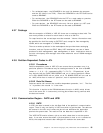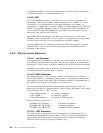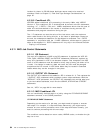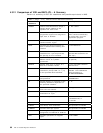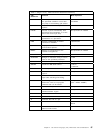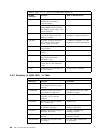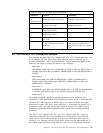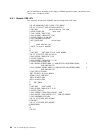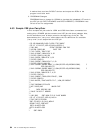
4.4 JECL
JECL is very important in VSE and is commonly used. The difficulty from a
conversion standpoint is to determine where the job is due to having two
different job cards in JCL. The JECL statement is a POWER job, the DOS Job or
VSE Job is the // JOB. The POWER job is like the MVS JOB. This is where the
class and priority information is specified. It exists at the beginning of a job
stream.
JES control statements are not recommended for new applications. You should
use the new JCL statements such as // OUTPUT instead of the /*OUTPUT,
/*ROUTE JECL statements. Today most JECL functions can be accomplished
through standard JCL statements.
See Table 10 on page 90 for a list of recommendations.
4.4.1.1 LIST Card - * $$ LST
The LIST card in VSE is the equivalent of both // DD SYSOUT statement and
OUTPUT statement in MVS.
Defaults, list and punch destinations can be put on the VSE JOB card as well as
the LST card. Both are merged into the OUTPUT statement in MVS.
There is a difference between the scope of a LST statement and an equivalent
DD statement. In MVS a DD statement is only viable for one step. In VSE, a * $$
LST statement is in effect from the time it is processed by POWER until EOJ or
another LST statement for the same device address is processed. As soon as
the effect of a given LST statement ends then the output is available for printing.
4.4.1.2 Data Statement - * $$ DATA
The data statement in VSE is a way for an include in SLI to specify the point
where some data external to that include statement should be processed. It is
similar to sending overrides in JECL but not as cumbersome in the space with
the line number. The data statement allows you to pass data to a step. The step
could be in the middle of an include statement. This is a commonly used
method. The MVS equivalent is either a DD DATA override or a DD that points to
a PDS member or a sequential data set.
4.4.2 Comparison of POWER and JES2 JECL - A Summary
Table 9 (Page 1 of 2). Overview of POWER JECL Statements
POWER
Statement
Function JES2 or MVS Equivalent
* $$ CTL Assigns a new default input
class to VSE/POWER jobs.
$T RDR(nn),Class=class
* $$ DATA Inserts data from the reader
queue into a library member
after this member was
retrieved for inclusion into a
VSE/POWER job.
// DD * or
// DD DATA
* $$ EOJ Indicates the end of a
VSE/POWER job.
//
Chapter 4. Job Control Language (JCL) Differences and Considerations 89



